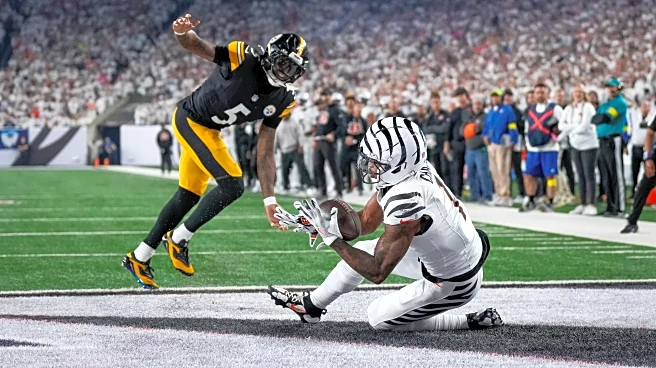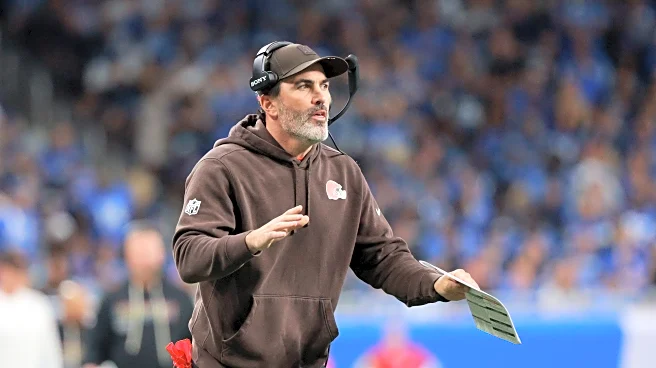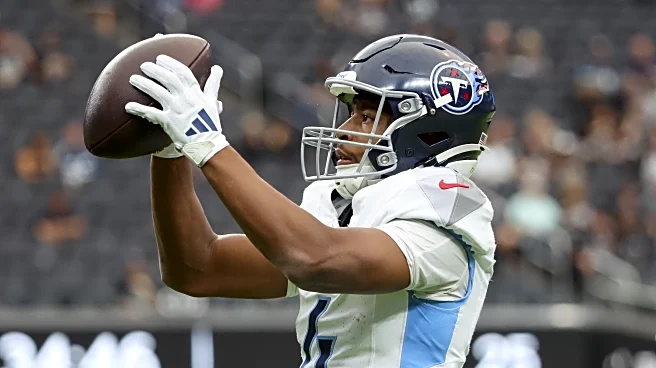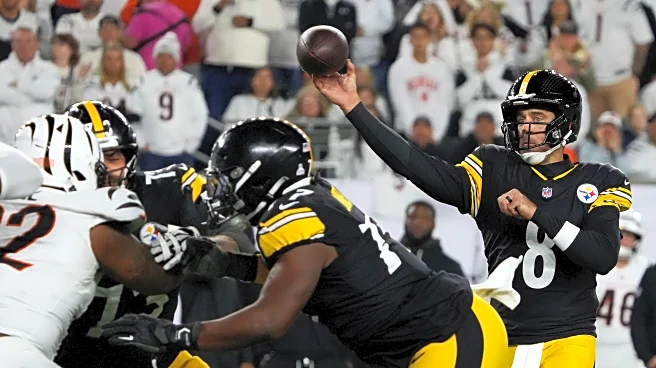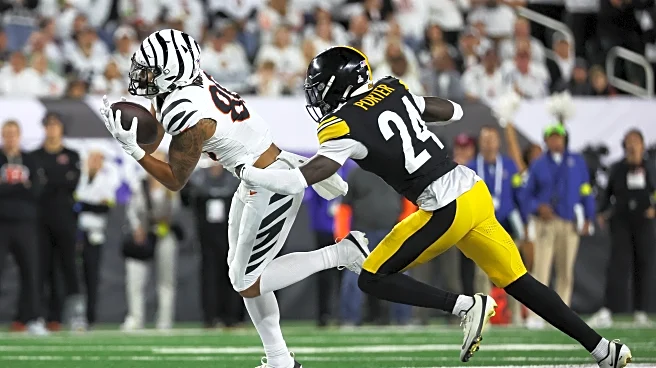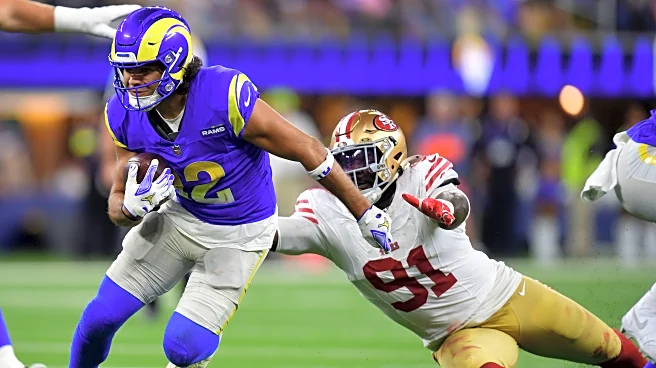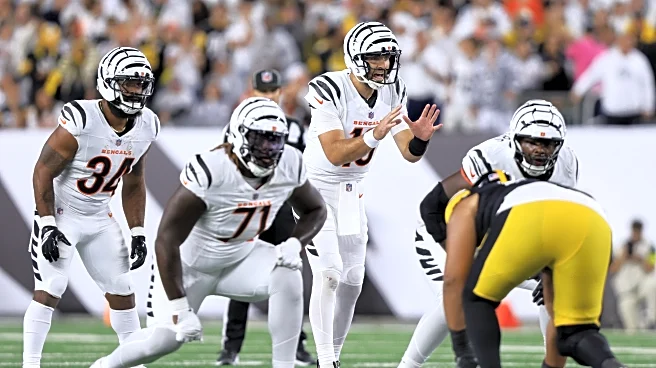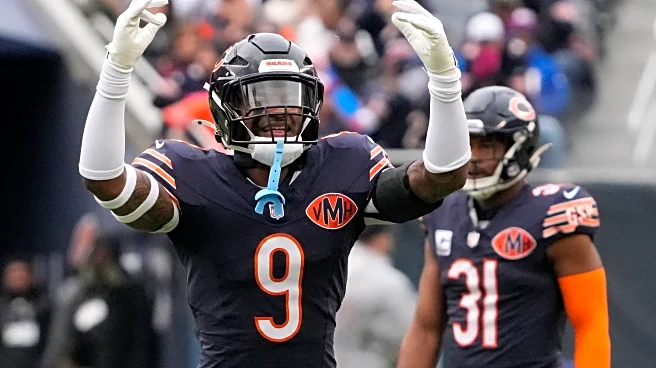Intro
What went wrong defending the passing game?

By now, you’re well aware the Steelers got embarrassed in coverage Thursday night. Most of the television, podcasts, articles, and discussions with Steelers fans over the past six days have drilled that home for you, as if your eyes didn’t already do that for you during the broadcast.
The numbers speak for themselves. Joe Flacco, a Bengal for less than a fortnight, completed 66% of his passes for 342, three touchdowns, and no interceptions. Jama’rr Chase drew 23 targets, converting 16 of them into
receptions for 161 yards and a score. Tee Higgins ate as well, scoring one touchdown and catching six of 10 targets for 96 yards, including the victory-clinching catch that let the Bengals drain most of the clock before Evan McPherson’s go-ahead field goal. Even backup tight end Noah Fant and WR3 Andrei Iosivas chipped in 44 and 49 yards, respectively, and Fant also added a touchdown.
So what the heck happened?
We’ve heard the usual list of complaints in the days since the game:
- Grumbles about the expensive defense not living up to expectations.
- Nearly every Steeler corner and safety being referred to as either overrated or even worse, cooked.
- There were plenty of complaints about a T.J. Watt “no show” — even though he combined with Cam Heyward for a sack.
- Even more complaints were levied about how often, or rather how sparsely, Nick Herbig was deployed.
- Communication/assignment busts
- And perhaps the most maddening one of all for Steelers fans — allegations that the Steelers’ defense is just too predictable.
I wanted to get to the bottom of which, or to what degree, each of these complaints played into Thursday’s dismantling of the Steelers’ pass defense. So, naturally, I charted each of Flacco’s 47 passing attempts from this game.
For starters, the Steelers did struggle to create pressure on Flacco for most of the night. A significant reason for this, however, was because the Bengals have so far asked their 40-something-year-old quarterback to run a similar offense grift to what the Steelers are running with Rodgers: use your years of experience to diagnose coverages pre-snap, be decisive, and get the ball out quickly.
On Thursday, Flacco’s average time to throw was 2.27 seconds. To put into further context how dangerous that can be, consider this: Chase’s reported 20-yard split in the 40-yard dash at his Pro Day was 2.51 seconds.
Consider further still that it’s hard to get to the quarterback down in less than 2.5 seconds. Nick Bosa averaged 2.93 seconds from snap to sack on his two sacks this year before being injured. Bengals All-Pro Trey Hendrickson is averaging 3.37 seconds on four sacks this year. Micah Parsons is averaging 4.83 seconds on his five-and-a-half sacks. You get the idea.
So while yes, I do think playing Herbig (4.77-second average time to sack) on just 38% of the snaps is ill-advised — especially during the Bengals’ final series when he didn’t see the field once despite Cincinnati trailing and being in an obvious passing situation — it’s too reductive to say that playing him more would have been enough to counter what Zac Taylor and Flacco were drawing up. Yes, I think the Steelers could stand to be a lot more creative by adding more simulated pressures. They could also be more creative in their pass rush designs by trying to more consistently change up the looks for the offensive line. Still, it remains to argue that the Steelers’ pass rushers would have been able to get home with how quickly Flacco was distributing the ball.
No, I place most of my blame on the notion that the Steelers’ defense is just too predictable. Doubly so in a game against an opposing playcaller who’s been in the AFC North since 2019 and a veteran quarterback with 12 seasons in the division already under his belt before this year.
Take a look at the rates at which the Steelers have run different coverages. They are predominantly a Cover 3 and Cover 1 team.
Following his big night, Chase had this to say to TribLIVE about the Steelers’ defense:
“They did exactly what we were expecting and hoping they’d do,” Chase said. “Man (coverage). We knew they were going to put Joey (Porter Jr.) on Tee (Higgins) and put Jalen (Ramsey) on me. We knew that we were ready for it. We knew that we were going to take advantage of those opportunities.”
Chase exaggerates some — the Steelers did run a lot of man coverage, but it was still only roughly a third of the time, and seemed to include more Cover-2 man than in previous weeks. They also mixed which corners were covering Chase fairly regularly, and I would argue it was Darius Slay who was most frequently burned by Chase in man coverage. Furthermore, the Bengals were able to exploit the Steelers in various zone coverage in equal measure, continuously running the exact right zone concept beaters based on which coverage shells the Steelers were deploying.
Despite Chase’s embellishments, what makes this so aggravating for a Steelers fanbase that has been begging Tomlin’s regime to modernize for a handful of seasons now, is that this isn’t the first time we’ve heard a player say this about the black and gold’s defense. Former Patriots receiver Julian Edelman lampooned the Steelers on a podcast last season, saying they were still running coverages he used to take advantage of in his playing days. The Ravens also took joy in dancing on the Steelers’ grave after eliminating Pittsburgh from the playoffs.
The biggest culprit is how static the Steelers are on defense. Before the snap, they are very rarely moving around in a way that dictates the flow of the next play or disguises their intentions. I counted maybe five or six plays where the Steelers disguised the coverage they were going to run by rotating post-snap, but there was little to no presnap movement to mess with the offense’s eyes. There were about three or four other plays where players rotated in coverage post-snap, but still ran a version of the concept they were showing pre-snap.
As a result, the Bengals and Flacco typically could look out at what the Steelers were showing them, and have a pretty good idea who and what they could scheme open.
Take this 40-second drive at the end of the first half.
- (0:00) Steelers show Cover-2, but run what looks like Cover-3 post-snap. With Darius Slay showing inside leverage and bailing to the deep-third, it’s an easy pitch and catch for Flacco and Chase on this out rate designed to beat the soft both the corner’s leverage and the soft spot in the coverage concept. Pittsburgh catches a break as this catch was overturned after review
- (0:08) Steelers show Cover-2 and are indeed running Cover-2 man coverage. With Chase and Higgins split to the left, the Bengals create conflict with how that side of the field is triangulated in coverage. Safety Juan Thornhill is responsible for the deep half and is forced to keep backpedaling as Higgins runs a go route and brings the corner, Slay, with him. Meanwhile, Ramsey has Chase in the nickel, but has leverage to the inside of the field. The Bengals space and time that routes so that Chase breaks on an out route while parallel to Higgins, who has taken the safety and the corner assigned to him out of the now vacated space for Chase. This isn’t Ramsey getting burned; this is the Bengals using the Steelers’ defenders’ own leverage against them.
- (0:23) Steelers are once again in Cover-2 man and show it pre-snap. Ramsey gives a ton of cushion. Chase fakes like he’s going to run a crosser, getting Ramsey to flip his hips inside, straightens out like he’s running a go, then snaps off a comeback route to the outside, where Ramsey is defenseless to change quick enough before another gain, this time for eight yards before going out of bounds to stop the clock. The Steelers don’t want to give up the big vertical shot, and the Bengals use it against them for the third straight target.
- (0:33) What coverage are the Steelers in? Yep, Cover-2 Man. This time, Slay is in the slot and the Bengals have Iosivas run a curl concept to freeze him. This creates enough space to run another out route to Chase, who once again uses Ramsey’s inside leverage and desire to prevent a deep ball getting over his head against him. Fortunately for Pittsburgh, Herbig is able to pressure Flacco on this play and force the errant throw.
- (0:41) Steelers show Cover-2 again, only this time it’s zone. Flacco takes the easy completion to Fant who runs a spot route to the middle of the field. Linebacker Payton Wilson was bailing as if he expected Fant to go up the seam, and nickel corner Ramsey breaks on the tight end once the ball is in the air to the tight end, but is unable to any sooner, lest he leave a big gaping hole in the zone for Tee Higgins running a slant. The Bengals take the clock down and kick the field goal.
All day it was like this for the Steelers’ defense. More often than not, the Bengals had not only a concept beating route, but ran complementary routes that would create natural and legal obstacles for a Steelers defensive back. Like in the play below, where the Bengals line up two tight ends with Jamar Chase to the right, using one tight end to exploit the trailing corner’s position, and the other to clear out the linebacker and open a huge hole for their Ferrari to run through.
It was a long day of a familiar opponent using the Steelers’ tendencies against them. Flacco also mentioned in his post-game interview with Amazon’s crew that he didn’t always get the call from Taylor as they were having communication issues all night. So he really was just reading the Steelers’ presnap looks and trying to exploit any leverage weaknesses he could spot in defenders in coverage.
At the end of the day, I think some schematic changes would greatly help this defense. I don’t see a lack of talent from these players; I see a staff not doing enough to put them in good positions.
Still, until Mike Tomlin and Teryl Austin stop living in the early 2000s and start to make this defense more kinetic pre-snap, I fear opposing quarterbacks will continue to exploit them.
What went wrong defending the run game?

RB: The Steelers’ issues in the secondary were the biggest blemish of the team’s 33-31 loss to the Bengals last week, but the Pittsburgh run defense disappointed its fair share as well.
The Steelers allowed 142 rushing yards against the Bengals, allowing a brutal 9.8 yards per carry to running back Chase Brown in his first 100-yard rushing game of the season (his first over 50, even).
The numbers were bad, and they look even worse considering that Cincinnati had the league’s worst rushing offense entering the game. Even after his explosion against Pittsburgh, Brown only averages 3.6 yards per carry on the season, and the Bengals are still last in rushing yards per game at 68.9.
The Steeler defense can be incredibly unpredictable. The week prior to the Bengals game, Pittsburgh held the Browns’ impressive rushing offense to just 65 yards on the ground. Rookie phenom Quinshon Judkins was held to season lows in yards and yards per carry.
While the Pittsburgh front seven undoubtedly played better against Cleveland, the fact that they weren’t threatened in the least by Dillon Gabriel and the Browns’ passing game was also a factor. Playing against a veteran quarterback in Joe Flacco and an elite receiving duo in Cincinnati’s Ja’Marr Chase and Tee Higgins, on the other hand, Pittsburgh had its hands full.
That’s not an excuse in the least – every other team the Bengals have played so far has found a way to shut down Chase Brown – but it does explain some of what changed for the Steelers in Week 7.
The first mistake was a general lack of preparedness for the Cincinnati run game. And that isn’t me blindly criticizing. Linebacker Patrick Queen said as much following the game in an interview: “We weren’t expecting the run. You know, the (Bengals’) whole ranking and all this and that – like, ‘Hey they’re gonna run the ball this amount of times’ – whatever. I think we got pretty complacent, thinking they weren’t going to run a lot.”
Queen’s full interview is worth a listen – check out the whole thing on Steelers.com – but he can be a little too honest as much as he is insightful. Let’s not start a narrative that Pittsburgh fully ignored planning their run defense, but it’s clear that their first priority by far was stopping Flacco and the passing attack.
I think this led to the Bengals breaking off some chunk gains on the ground. Chase Brown had rushes for 27, 37, 12, and nine yards. That’s the result of not just poor gap integrity, but a failure to make tackles at the second level — the sign of a defense that was looking for the pass first.
In the words of Mike Tomlin in his postgame presser: “That speaks to multiple layers of dysfunction.”
He’s not wrong.
The Steelers really struggled with missed tackles on Thursday, allowing Brown to achieve a career high in yards after contact per NFL Pro (101!).
Also per NFL Pro, Brown finished +71 in rushing yards over expected. His previous season-high was +16. The majority of his games have been in the negatives this season.
Part of why Pittsburgh was able to get so much early contact on Brown was because of how the team plays defense this year. The Steelers blitz a lot (No. 7 in the NFL), stack the box a lot (No. 8 in the NFL), and like to mug the line of scrimmage with their inside linebackers.
When it works, it works. Here’s a successful run defense play (the Steelers had more than you think on Thursday) with Pittsburgh blitzing Cole Holcomb and DeShon Elliott. The latter does just enough to trip up Chase Brown, allowing Cam Heyward to clean up the play for a minimal gain.
But watch the play again, and you’ll realize just how narrow the margins are for error when blitzing in the NFL. By sending Elliott, the Steelers are left with a single high safety and a lot of defenders pressing the line of scrimmage. A slightly worse play from Elliott or Heyward, or a slightly faster cut from Brown, and all that’s left between him and the end zone is a poorly-angled Chuck Clark.
You can see how that can go wrong in the play below. Both Patrick Queen and Payton Wilson start the play lined up at the line of scrimmage. Both struggle to get off their blocks, making Heyward have to two-gap as a result. Samaje Perine scoots by, and the Pittsburgh secondary has to make the tackle as none of the front seven is left.
Looking at an earlier clip you see the problem again. Queen blitzes. Keeanu Benton sheds his block but moves into the same gap Chuck Clark is filling, vacating Chase Brown’s running lane. It’s a mistake that gives the running back an open-field opportunity against a single-high safety.
But the biggest issue, by far, didn’t have anything to do with the Steelers’ gameplan or philosophy. As you’ve probably already noticed in the above clips, the Pittsburgh front seven just couldn’t get off of blocks against the Bengals.
“At the end of the day, it’s one-v-one,” Queen said in his postgame interview. “Like, you got this guy; you gotta whoop that guy. And I think we weren’t doing that.”
The “C-gap insert” play above is especially disappointing for Nick Herbig, who doesn’t get blown off the ball but still doesn’t impact the play much despite being blocked one-on-one by a tight end. To be fair, Drew Sample (No. 89 on the Bengals) played a great game and is a plus blocker at his position, but you never want your high-end edge rushers being taken out that easily.
I’m of the opinion that there are a lot of misinformed takes regarding Nick Herbig’s run defense. But Thursday’s game was not a good performance of his in that regard.
To be fair, he was far from the only culprit. Rookie defensive lineman Yahya Black drew tougher assignments and had a rough time against the Bengals. On two big runs he was quickly moved on combo blocks – not what you want to see from someone who was largely drafted to slow those down.
(Revisiting our first clip):
And another gaping hole for Brown to gallop through, mitigated in the nick of time by DeShon Elliott.
Also from Queen’s postgame interview: the Steelers’ passing-down, two-high safety looks could leave three gaps for two inside linebackers to cover. If someone doesn’t make an above-and-beyond play in the front seven (both Herbig and Black don’t do much to close the gap), it’s once again up to the secondary to fill in.
There’s not an overarching schematic theme to Steelers’ run game woes against the Bengals. And as Mike Tomlin, perhaps rightfully, pointed out on Tuesday, a few poor reps overshadowed what was a largely acceptable night stopping Chase Brown.
The Pittsburgh ground defense doesn’t need a complete overhaul. I’d maybe experiment with giving Daniel Ekuale some more play over Yahya Black or Keeanu Benton at times. Working on Black’s pad level is a must. And perhaps toning down the A-gap pressures from the team’s smaller linebackers could be an option as well. It’s a fun wrinkle, but Queen and Wilson understandably struggle to stand up to NFL offensive linemen without a running start.
But as obvious as it sounds, the main hope is that the team’s top players can look the part more often in future games and do a better job maintaining their gap integrity.
Being more prepared for the run would also help, no? The good news is Pittsburgh has no excuse to not see Josh Jacobs coming next week. While the Bengals rank dead last in run percentage this season, Green Bay ranks fourth.
The Steelers will definitely be expecting the run game on Sunday.
While the Pittsburgh run defense is certainly still a concern, I’d be more worried about the secondary following their performance against Cincinnati.
Still, a growing narrative in 2025 is that the big-name Steelers defensive line has been far too up and down to live up to its billing this year. Yeah, you’ve heard it a bunch already this year, but Pittsburgh is paying too much money to its defensive stars to be dealing with issues this simple.
At best, the collapse against the Bengals was an off night made worse by the general weirdness of Thursday Night Football. A rebound game against Green Bay would be huge for the Steeler defense.
Join in on Steelers R&R by sharing your takes on this week’s topics. What are your thoughts on Pittsburgh’s defensive woes against the Bengals? Feel free to pitch future questions in the comment section or on Twitter/X: tag @_Ryland_B or @RyanParishMedia, or email us at steelersreadnreact@gmail.com.
